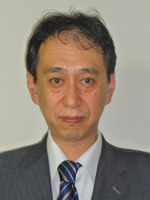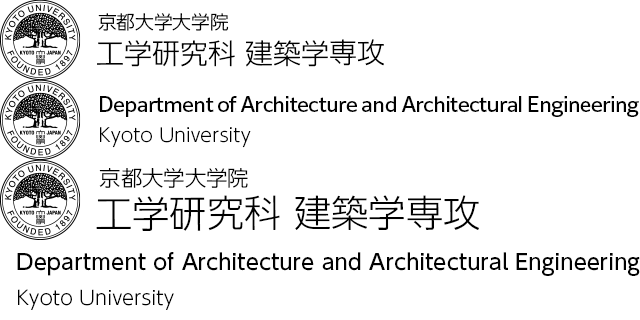Sustainable Built Environment Engineering
It is expected that more than 60% of people in the world will live in urban areas in the early 21 century. The most important subject of the global environment issue is the CO2 emission. One third of it is caused by buildings and most part of the emission is derived from the operation of buildings over their life cycle. For the reduction of CO2 emission, our laboratory studies on energy saving and commissioning of building systems, and planning and design of sustainable buildings. In addition we analyze the influence of buildings and green zone on the urban heat island phenomenon by taking buildings as the key elements of urban areas. The fundamental studies on modeling meteorological data such as air temperature, radiation, solar illuminance and solar irradiance are also conducted in order to analyze urban comfort and reduce environmental load.
Academic Staff
Kazunori HARADA
 Professor (Graduate School of Engineering)
Professor (Graduate School of Engineering)
Research Topics
To extend the concept of performance- based design of buildings and built-environment, methodologies for environmental control and fire safety are being studied in design, construction and maintenance stages.
Contacts
Room 482, Bldg. C1-4, Katsura Campus
TEL: +81-75-383-3273
FAX: +81-75-383-3273
E-mail: harada archi.kyoto-u.ac.jp
archi.kyoto-u.ac.jp
Daisaku NII
Associate Professor (Graduate School of Engineering)
Research Topics
To advance the performance-based evaluation methodology of evacuation safty planning and smoke control system in building fire, predection method of smoke behavior and risk evaluation are studied.
Contacts
Room 481, Bldg. C1-4, Katsura Campus
TEL: +81-75-383-3272
FAX: +81-75-383-3272
E-mail: nii archi.kyoto-u.ac.jp
archi.kyoto-u.ac.jp
Anyang SUN
 Assistant Professor (Graduate School of Engineering)
Assistant Professor (Graduate School of Engineering)
Research Topics
My research topic focuses on the fire safety on timber architecture. Studies on burning behavior, heat and mass transfer in timber elements under fire heating are investigated experimentally and numerically.
Contacts
Room 483, Bldg. C1-4, Katsura Campus
TEL: +81-75-383-3274
FAX: +81-75-383-3274
E-mail: sun archi.kyoto-u.ac.jp
archi.kyoto-u.ac.jp
Research Topics
Control of thermal and luminous environment in building and built-environment space
Researches are made on control strategy of urban built-environment and buildings for desirable thermal and luminous environment. For example, to mitigate the thermal accumulation in urban area during summer, use of cross ventilation through spaces between constructions. Selection of surface coverage is also an important issue to prevent excessive solar heat gain by surface. As shown by a field measurement of courtyard space, trees reduce the temperature rise by making shadows, while artificial materials such as concrete and brick are easy to absorb solar heat to increase urban temperature.
Visualization of fire safety
Fire could be a crucial disaster that kill people, but cannot be suppressed easily. One of the reasons is that; Most people believes that fire would not occur around them, and even if so, they tend to believe that they can escape easily even without knowing what will happen during fire event. As an example, a common polyurethane cushion would cause fire growth rapid enough to trap people. Research work is in progress to visualize fire hazards by experimental and theoretical modeling, and to develop safety strategies of building and built-environments.
Fire proof structures
The endurance of construction to fire depends on high-temperature behavior of construction materials. Even if the construction is made of non-combustible materials such as steel and concrete, degradation of strength and stiffness are serious problems that may lead to collapse of structures. Certain type of materials may be sensitive to fire heating, which may be destroyed in a brittle way by thermal stress and other hygro/thermal effect. On the other hands, timber structure had been thought weak to fire. However, wood can be fire resistant material after selection of wood type and combination with appropriate materials. For designing buildings and urban constructions against fire effect, research is being conducted to investigate the high temperature behavior of materials.
Spectrum-based simulation and evaluation of architectural lighting
The spectral distributions of rapidly spreading new light sources, as LED, are different from conventional fluorescent lamp and incandescent lamp. As for daylight from windows, the spectral distribution varies by blue sky and clouds. We are developing new techniques to simulate and evaluate the spatial distribution of spectral radiation in architectural lighting environments.
Daylight & meteorological observation and development of the new spectral radiometry
The building environment is influenced by various outdoor meteorological elements, e.g. temperature and humidity fluctuated by season, time and weather condition. In our daylight & meteorological observatory, we measure the building meteorological elements including solar illumination and radiation etc., to develop the weather model for design of comfortable and energy-saving buildings. On the other hand, we are developing new meteorological instruments to measure the spectral radiance distribution of a whole sky in a moment.
